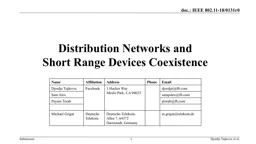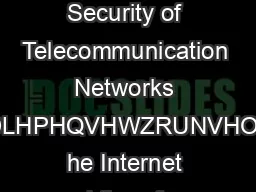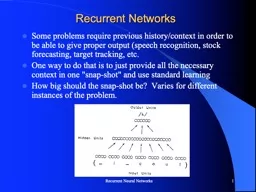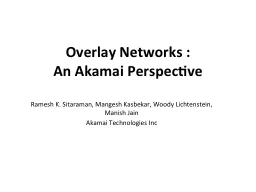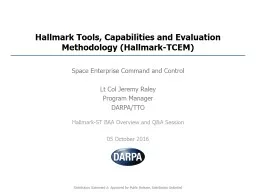PPT-Distribution Networks
Author : sherrill-nordquist | Published Date : 2019-11-20
Distribution Networks and Short Range Devices Coexistence Djordje Tujkovic et al 1 Name Affiliation Address Phone Email Djordje Tujkovic Facebook 1 Hacker Way Menlo
Presentation Embed Code
Download Presentation
Download Presentation The PPT/PDF document "Distribution Networks" is the property of its rightful owner. Permission is granted to download and print the materials on this website for personal, non-commercial use only, and to display it on your personal computer provided you do not modify the materials and that you retain all copyright notices contained in the materials. By downloading content from our website, you accept the terms of this agreement.
Distribution Networks: Transcript
Download Rules Of Document
"Distribution Networks"The content belongs to its owner. You may download and print it for personal use, without modification, and keep all copyright notices. By downloading, you agree to these terms.
Related Documents

